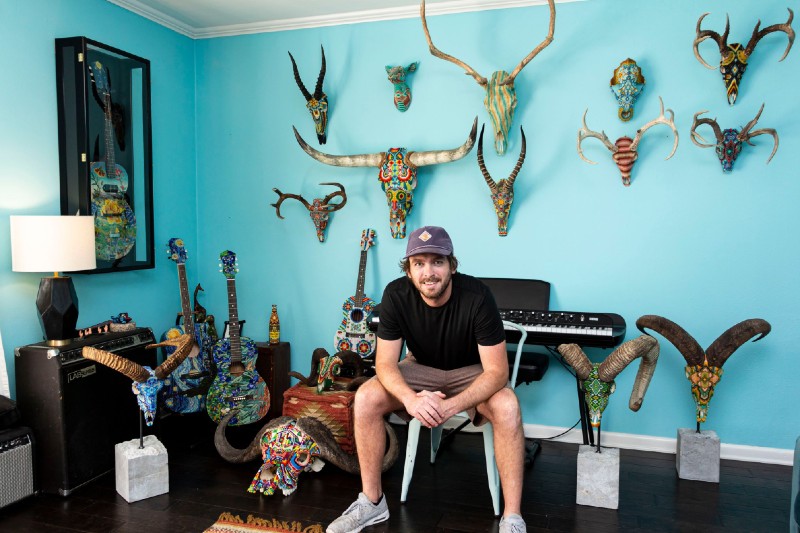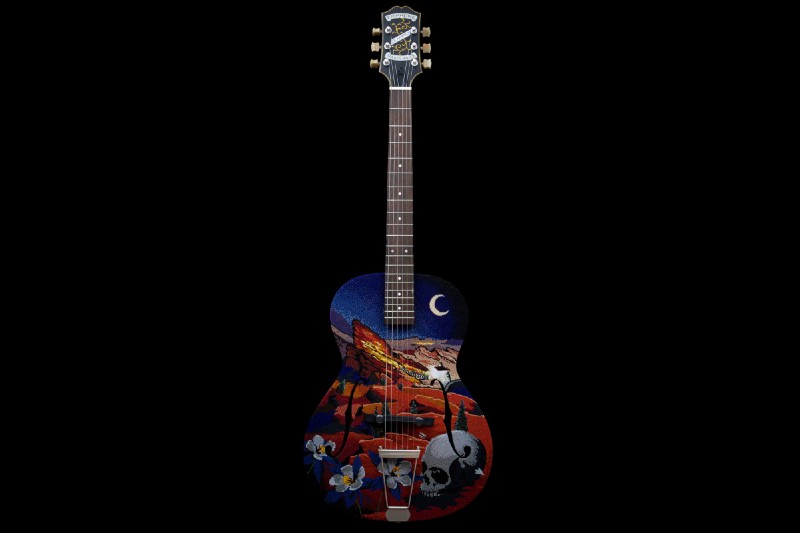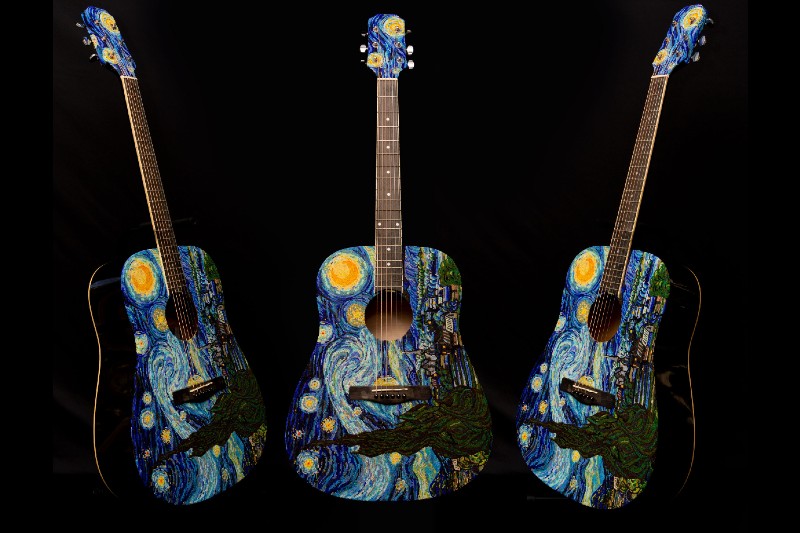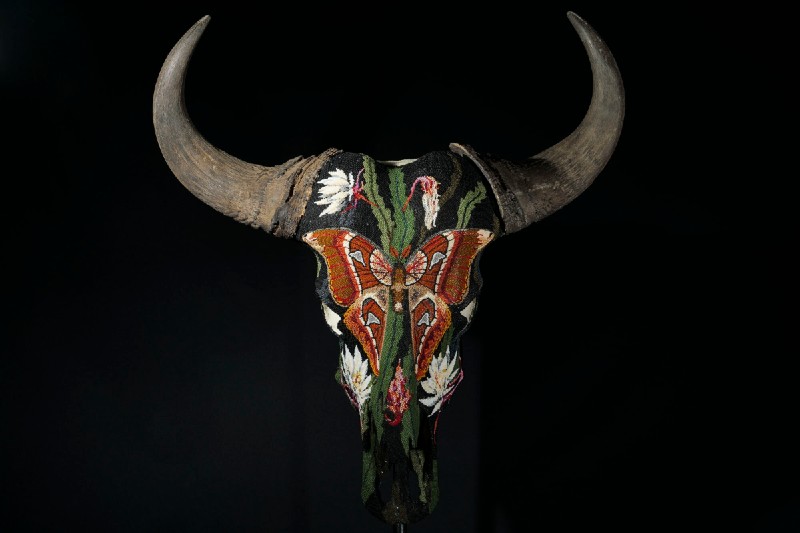
Carter Watkins can bead just about anything, but the Austin-based artist is best known for the intricate landscapes and geometric patterns he affixes to unlikely canvasses including animal skulls and guitars. He uses melted beeswax, which creates a strong bond as it dries, as the sticky base for the hundreds of thousands of multi-colored beads adorning his works.
His one-of-a-kind works of art are inspired by the landscapes of West Texas and crafted using the Huichol beading technique, but he’s also heavily influenced by the mosaics of the Italians and Romans. Watkins’ craftsmanship and artistic ingenuity takes these varying artistic styles, marries them with his Art Director background, and creates original hand-beaded artifacts that attract buyers from across the United States. Purveyors of his art are attracted to the uniqueness and attention to detail that each piece demonstrates.
Related Guides
- Contemporary Artists You Need to Know
- Where to Find Artwork to Match Your Style
- How to Learn a Musical Instrument
“Every single one is the only one that will ever exist,” says Watkins. “Ever. There will never be anything else like it. You will own the only one.”
Watkins started his career as a graphic designer before making the jump from corporate branding work to full-time bead artist in late 2018. He’s hand-beaded over 50 artifacts since then, including a guitar for the country artist Shakey Graves, which he used at a performance at the Red Rocks Amphitheater in Colorado. After the show, Shakey Graves put the one-of-kind guitar up for sale at a charity auction benefitting the Children’s Cancer Association, where it eventually sold for $30,000.

Before his art made it to the famed stage at Red Rocks, it started out as a way to sneak a skull into his wife’s home décor plans. Back in high school, Watkins bought a huge longhorn skull with a Texas flag painted on it and carried it around throughout college at Arizona State. When he and his wife moved into their new home in Austin, Texas, in 2014, the skull didn’t exactly fit the couple’s style.
“I was about to get rid of it, and then I had this realization that I’m an artist. I could probably turn this into a cool piece of art for the house,” he recalls.
Watkins remembered the moment he saw some bead art in a store in Mexico and the way it completely mesmerized him. He looked up how it was made and found that it was actually incredibly simple: All he needed was beeswax and beads. As fate would have it, his new house was located six blocks from both a bead store and a taxidermy store.
That first piece was like a lightning bolt for Watkins. He realized that bead art as a medium was everything he wanted to achieve as an artist. The way the beads perfectly punctuate the natural curves and lines of his canvasses helps breathe new life into these once-hollow skulls. If life is art, Carter proves that death can be, too.
“It’s something you can stare at for hours. It’s three-dimensional, colorful, and it’s got texture. Not only are there patterns in the colors, but there are natural patterns that a bunch of circles packed in together make,” he says.
Watkins’ background in graphic design definitely influenced his beadwork and helped take his style from simple geometric patterns to photorealistic replications of works like Van Gogh’s Starry Night, which he applied on a guitar. One of his favorite pieces is this Texas wildflowers and snakes guitar, which he says took him over a month to create.

Bead art is inherently intricate and detailed, but Watkins’ works take it to a whole new level. His original designs feature vibrant desert landscapes, lifelike wildlife, and mesmerizing mosaics that are applied with such pinpoint accuracy that from far away they look to be printed. Up close, you can see that each bead actually functions as a single, beautiful pixel to create a cohesive vivid image.

It’s painstaking work – larger pieces, like longhorn skulls and guitars, take at least a month of 8-10 hour workdays carefully applying every bead by hand. Smaller artifacts, like deer skulls, take about a week or longer, depending on how many colors he’s using and the complexity of the design.
“In quarantine, I would treat it like a 9-5 and I would spend all day beading. It’s a good way to pass the time,” he says with a laugh. “I think I like doing it because it’s a challenge: The time and craftsmanship involved in creating the final piece,” says Watkins. “It’s really exciting.”
After all the time it takes to create one of his pieces, Watkins says he doesn’t have a hard time letting them go. In true artistic fashion, he’s just happy he gets a chance to continue making these detailed works. “Selling them gives me more money to go make more art,” he says.
For all the unlikely canvasses he fills with beads, Carter says there’s one that continues to escape him.
“I’ve always wanted to bead a functioning car,” he says. Beeswax starts to get soft at around 115 degrees, which would mean he run the risk of all the beads slowly sliding off the hood of a car on a hot summer afternoon in Texas. “That one’s going to require some problem-solving.”



